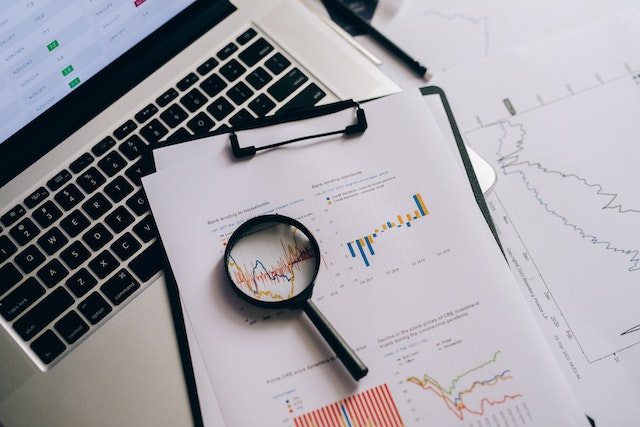The legal industry has long been known for its conservative approach to technology adoption. However, in recent years, the use of data analytics and artificial intelligence (AI) has become a game-changer for the practice of law. Legal analytics is the application of data analysis methods and AI technologies to extract insights from large volumes of legal information. This emerging field offers lawyers powerful tools to analyze cases, predict outcomes, identify trends, and make strategic decisions based on data-driven insights. In this blog post, we will explore what legal analytics is all about and how it can help transform the way law firms operate in today’s digital age.
What is legal analytics?
Legal analytics is the use of data analysis methods and AI technologies to extract insights from large volumes of legal information. This field has emerged in recent years as a powerful tool for lawyers to analyze cases, predict outcomes, identify trends, and make strategic decisions based on data-driven insights.
One aspect of legal analytics involves using machine learning algorithms to classify and categorize vast amounts of legal documents such as case law, statutes, regulations, court filings and contracts. These tools can then be used by lawyers to search through these documents quickly and efficiently.
Another area where legal analytics can prove useful is in predicting litigation outcomes. Lawyers can use historical data from previous cases that are similar in nature to the one they are working on to determine the likelihood of success or failure in their current case.
Legal analytics represents a significant development within the industry with implications for how law firms operate going forward. It provides a valuable opportunity for lawyers who want an edge over competitors by being able to work smarter with high-quality insights gleaned from big-data sources.
How can legal analytics be used in the practice of law?
Legal analytics is an emerging trend that has been gaining traction in the legal industry as a game-changer for the practice of law. It involves the use of data analysis tools to uncover insights and patterns from vast amounts of legal information, including cases, judgments, statutes, regulations and other legal documents.
One way in which legal analytics can be used is for predictive modeling. By analyzing past case outcomes and identifying key factors that influence those outcomes, lawyers can predict with greater accuracy how future cases are likely to unfold. This enables them to make more informed decisions about which strategies to pursue and what arguments to present.
Another application of legal analytics is in strategic decision-making. Lawyers can use data analysis tools to identify trends and patterns across their client base or specific areas of law, enabling them to better understand market dynamics and develop more effective business strategies.
Legal analytics also allows lawyers to gain deeper insights into judges’ tendencies by examining their past rulings on similar cases. This helps attorneys tailor their arguments accordingly and anticipate potential objections or issues that may arise during trial.
Incorporating legal analytics into the practice of law has numerous benefits such as improving efficiency, increasing accuracy in predicting outcomes, reducing costs associated with research time/expert witnesses/consultants/etc., identifying emerging risks/trends/opportunities faster than competitors can respond etc..
What are the benefits of using legal analytics?
The use of legal analytics has several benefits for lawyers and law firms. First, it can help to improve the efficiency and accuracy of legal research by quickly identifying relevant cases or statutes that may be overlooked in traditional methods. This can save lawyers valuable time and resources that would otherwise be spent on manual research.
Moreover, legal analytics can assist in predicting the outcome of a case based on data from similar cases. This allows lawyers to create more informed strategies and make better decisions about whether to settle or pursue litigation further.
Another advantage is that legal analytics helps identify trends within the industry, such as which judges are more likely to rule in favor of certain arguments, allowing attorneys to tailor their approach accordingly. Additionally, using this technology enables law firms to provide clients with real-time information about their cases’ progress.
In summary, incorporating legal analytics into a law practice offers many advantages – improved efficiency and accuracy during research, informed decision-making when creating strategy or pursuing litigation; knowledge regarding trends in the industry; providing clients with up-to-date information about their case’s progress – making it a game-changer for modern-day lawyering.
What are some challenges associated with legal analytics?
Legal analytics is a powerful tool that can revolutionize the practice of law. By providing lawyers with data-driven insights and predictions, it enables them to make more informed decisions and provide better outcomes for their clients.
However, there are also some challenges associated with legal analytics. One major challenge is the quality of the underlying data. If the data used in legal analytics is incomplete or inaccurate, then any analysis based on that data will be flawed.
Another challenge is ensuring that lawyers have the necessary skills and training to effectively use legal analytics tools. As with any new technology or approach, there may be a learning curve involved in adopting legal analytics into everyday practice.
Despite these challenges, it’s clear that legal analytics has enormous potential to transform the field of law. As more firms begin to incorporate this technology into their operations, we can expect to see even greater advancements in litigation strategy and decision-making processes going forward.










